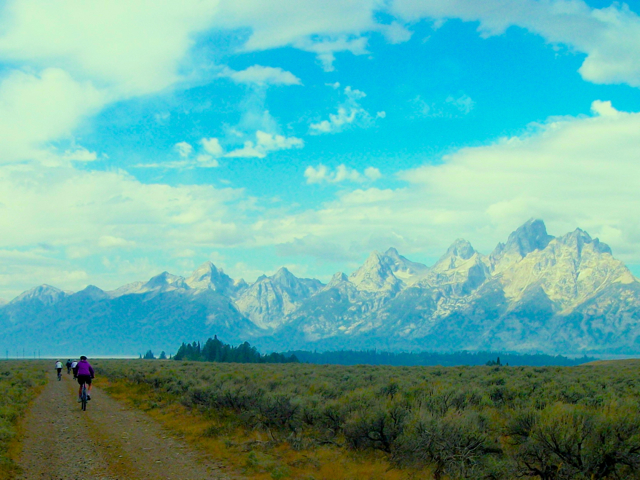Death Valley National Park is known as the hottest, driest, and lowest place in North America. Annual precipitation is below 2 inches and some years have recorded no rainfall, but annual evaporation rate is 150 inches per year! In 2001, there were 154 consecutive days above 100 degrees.
The depth and shape of Death Valley influence its summer temperatures. The valley is a long, narrow basin 282 feet below sea level, yet is walled by high, steep mountain ranges. The clear, dry air and sparse plant cover allow sunlight to heat the desert surface. Heat radiates back from the rocks and soil, then becomes trapped in the valley's depths. Summer nights provide little relief as overnight lows may only dip into the 85°F to 95°F range.
Here's a photo of one of the famous 20 mule team rigs used to haul borax, a salt mineral, to market...
Artist Drive was a lengthy one-way road with scenes like this...
The depth and shape of Death Valley influence its summer temperatures. The valley is a long, narrow basin 282 feet below sea level, yet is walled by high, steep mountain ranges. The clear, dry air and sparse plant cover allow sunlight to heat the desert surface. Heat radiates back from the rocks and soil, then becomes trapped in the valley's depths. Summer nights provide little relief as overnight lows may only dip into the 85°F to 95°F range.
Here's a photo of one of the famous 20 mule team rigs used to haul borax, a salt mineral, to market...
I hiked up Golden Canyon, where the reason for its name quickly became apparent...
Water is rare and precious in death Valley, so when a surveyor couldn't get his mule to drink from this rare pool of water, he named it "Badwater Basin." The water isn't really bad, just very salty. This is the lowest place on our continent at 282 feet below sea level.
A boardwalk keeps you from the pool of water, but you can walk the salt flats as seen here...
These barren salt flats represent the hottest, driest, and lowest elevation salt flats in North America, and served as a location for the filming of "Star Wars."
Mining companies have long ago departed this area, but a new wealth has replaced it: Tourism. People from around the world visit this well-known national park, the 50th I've visited of our 58 national parks.


















































